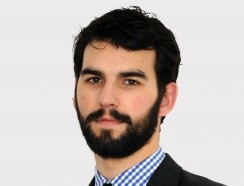A new report by the Education Policy Institute (EPI), funded by the Nuffield Foundation, explores headteachers’ and future headteachers’ movements throughout their careers. It shows that some schools, particularly in the North West, West Midlands, East of England and South East, risk isolation from professional networks, while others are disproportionately able to attract talent. This follows EPI’s previous study, which found that effective headteachers can improve pupils’ attainment by up to 2 GCSE grades.
The report finds that:
- School leaders and future leaders tend to operate in tightly connected ‘communities’. These are groups of schools, often within the same region, where headteachers and future headteachers are more likely to switch jobs, over a ten-year period.
- A headteacher, or future headteacher, in a secondary school is 20 times more likely to move to a school within the same community than to a school in another community. For primary schools, they are nine times more likely to remain within the same community.
- This creates ‘isolated’ schools, which are not connected to others through headteachers’ and future headteachers’ movements. These schools will likely not benefit as much as others from the knowledge, expertise and best practice of the most talented future leaders and leaders.
- The North West has the largest proportion of isolated primary schools (20 per cent), while isolated secondary schools are concentrated in the West Midlands, East of England, and South East, each of them having around 15 per cent of the isolated schools in England.
- Highly effective headteachers are not being drawn to low attaining or low disadvantaged schools, which could mean that these schools are not receiving the leadership talent they need most.
- More than half of the schools in London attract highly effective primary school headteachers, although less than half develop their skills there. Meanwhile, the North East seems effective at attracting and developing the best performing secondary school headteachers, with a fifth of the secondary schools developing top headteachers and a quarter recruiting them to the region.
Recommendations:
- Supporting isolated schools: Local areas should create structures to help spread good practice to isolated schools, which may lack the benefit of shared information from other schools. Multi academy trusts (MATs) and local headteacher networks can be vital in this role. Additionally, “Grow Your Own” (GYO) schemes that would support local teachers to become leaders in their local schools could address potential difficulties in recruiting and retaining leadership in those regions.
- Adjusting recruitment policies: Headteachers often move within local areas, so recruitment and retention strategies should be tailored to the specific needs and dynamics of local communities. The DfE should prioritise their support to local areas empowering them to address the challenges of their regions.
- Incentivising leadership in challenging schools: There is a misalignment between the placement of the most effective headteachers and the schools that need them most, such as those with higher levels of disadvantaged pupils or lower attainment. MATs and local authorities should explore ways to incentivise successful headteachers to take on leadership roles in these challenging schools.
- Understanding knowledge flows within communities and alignment with MAT model: More research is needed on how knowledge and information flows between schools within each community. Additionally, it is important to investigate whether the identified communities align with the structure of MATs. This would help understand whether knowledge gaps caused by low headteacher mobility can be mitigated by MAT networks.
- Understanding regional success in training, recruiting, and retaining effective leadership: More analysis is required to understand why regions such as London and the North East produce and attract a disproportionately high number of very effective headteachers. These insights could help inform strategies for replicating this success in other areas.
You can download and read the full report here.

Note: This report and website text were updated on 27 November 2024 to clarify the description of Figures 6 and 7, relating to the proportion of schools in a region attracting and developing top headteachers.
This report has been kindly funded by the Nuffield Foundation.

The Nuffield Foundation is an independent charitable trust with a mission to advance social well-being. It funds research that informs social policy, primarily in Education, Welfare, and Justice. The Nuffield Foundation is the founder and co-founder of the Nuffield Council on Bioethics, the Ada Lovelace Institute and the Nuffield Family Justice Observatory. The Foundation has funded this project, but the views expressed are those of the authors and not necessarily the Foundation. You can read more about their work here.

